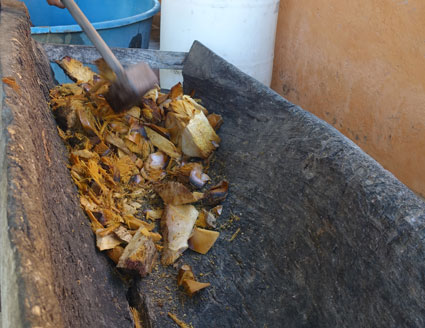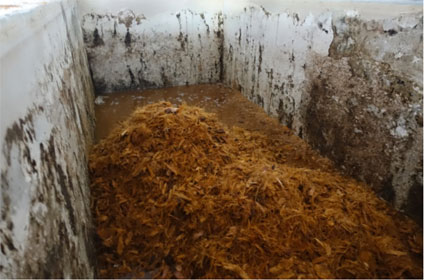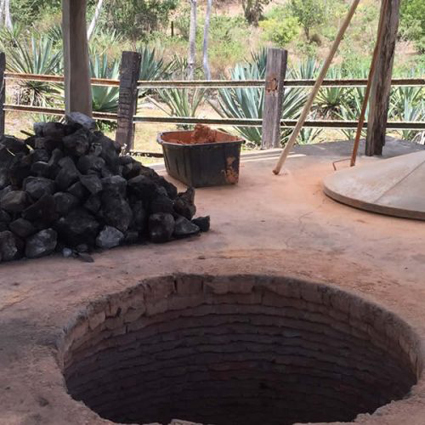
Fire-pit oven. The lid is in the right background
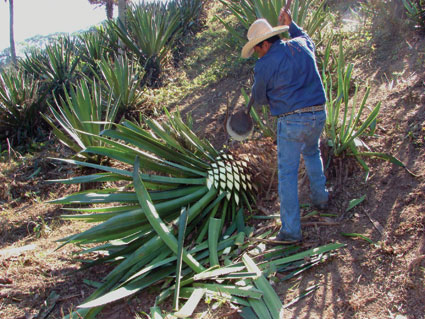
Santiago Diaz Ramos trimming a piñaming
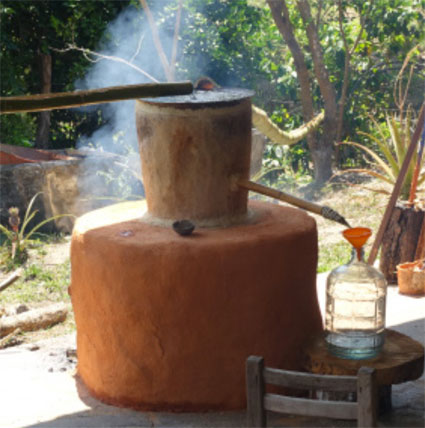
Second distillation in the Filipino still. Note the tree-trunk upper chamber.
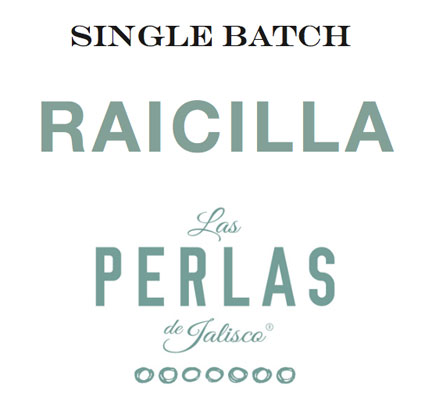
Wild and semi-wild agaves are cut-up by machete and axe, and roasted/baked in a cylindrical masonry wood-fired pit-oven. When the agaves are added, the oven is covered with a metal cap, then sealed with a layer of clay. On the second day of roasting, water is added to produce steam within the oven. Milling is done both by hand with mallets (mazos) in a canoa (pileta) and with a shredder. Fermentation with wild yeasts takes place in a large rectangular vat and is deliberately very slow (thus very complete): some 3-4 weeks. First distillation is in a 400-liter stainless-steel still; the second distillation is in a tiny 80-liter Filipino still, whose bottom chamber is a copper pot embedded in clay, and whose upper chamber is the hollowed trunk of a white fig tree.
